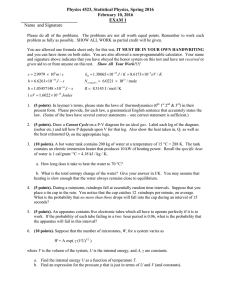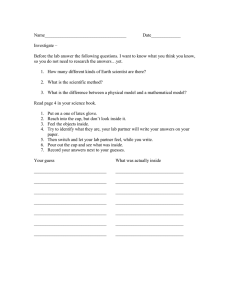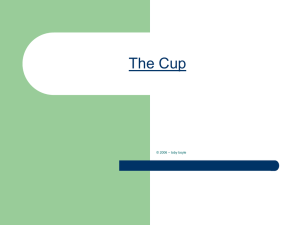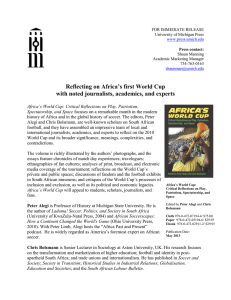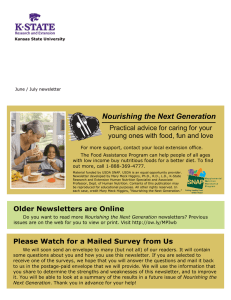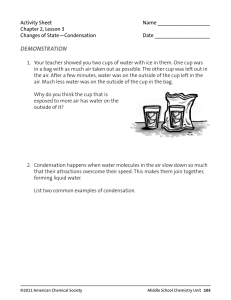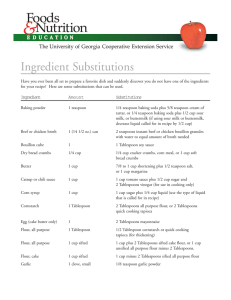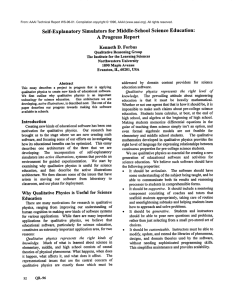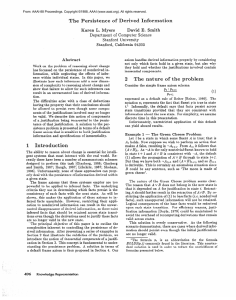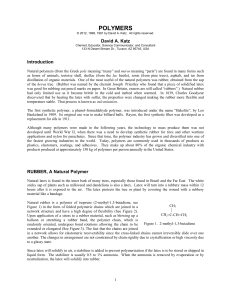What does the image show?
advertisement
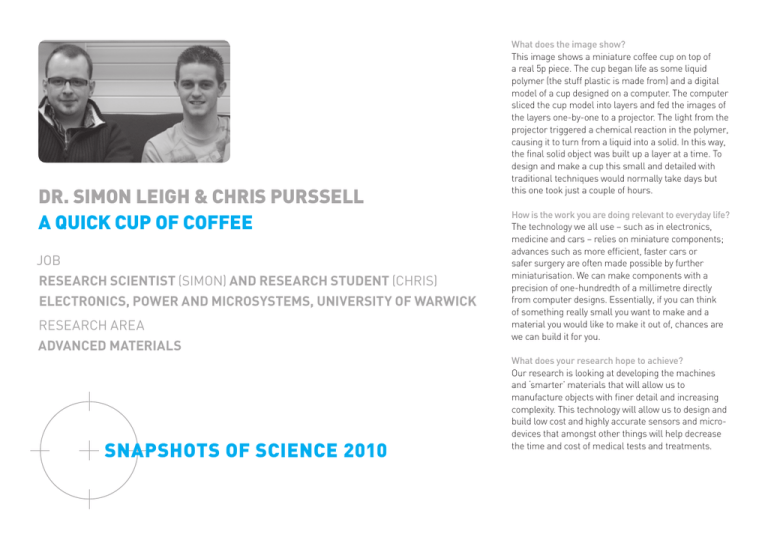
DR. SIMON LEIGH & CHRIS PURSSELL A QUICK CUP OF COFFEE JOB RESEARCH SCIENTIST (SIMON) AND RESEARCH STUDENT (CHRIS) ELECTRONICS, POWER AND MICROSYSTEMS, UNIVERSITY OF WARWICK RESEARCH AREA ADVANCED MATERIALS SNAPSHOTS OF SCIENCE 2010 What does the image show? This image shows a miniature coffee cup on top of a real 5p piece. The cup began life as some liquid polymer (the stuff plastic is made from) and a digital model of a cup designed on a computer. The computer sliced the cup model into layers and fed the images of the layers one-by-one to a projector. The light from the projector triggered a chemical reaction in the polymer, causing it to turn from a liquid into a solid. In this way, the final solid object was built up a layer at a time. To design and make a cup this small and detailed with traditional techniques would normally take days but this one took just a couple of hours. How is the work you are doing relevant to everyday life? The technology we all use – such as in electronics, medicine and cars – relies on miniature components; advances such as more efficient, faster cars or safer surgery are often made possible by further miniaturisation. We can make components with a precision of one-hundredth of a millimetre directly from computer designs. Essentially, if you can think of something really small you want to make and a material you would like to make it out of, chances are we can build it for you. What does your research hope to achieve? Our research is looking at developing the machines and ‘smarter’ materials that will allow us to manufacture objects with finer detail and increasing complexity. This technology will allow us to design and build low cost and highly accurate sensors and microdevices that amongst other things will help decrease the time and cost of medical tests and treatments.



